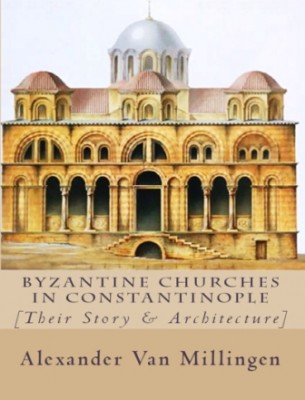More Search Results...
Alexander Van Millingen 1840-1915 He was born in 1840 in Constantinople. He was Scotch of Dutch extraction and he was the son of a doctor, who must have come out to Turkey in the early days of the 19. Century. He was physician at the Imperial Palace. The son A.v.M. was a scholar of the first order and he taught at Robert College for a great many years. He was formidable in his lectures but every one respected him for his erudition and his passion for accuracy in research. He was tall and spare and wore a rather scraggy moustache and his near-sighted eyes were almost hidden behind his thick pince-nez. His speech was always deliberate and sounded as though it flowed from the purest of classical fountaine.He was exceedingly broad-minded and possessed the ability of seeing the inner nature and the causes of things rather than judging them superficially. He was always energetic, active, strong and young-looking. He married Miss Cora Welch, daughter of a rich New Haven banker. He wanted a home for himself. He made an arrangement with the College to share in its construction. His 2 sons were the first students of Robert College.
Although Van Millingen excelled as a teacher and theologien archeology was the most important field of his activity. With the help of the many languages which he had mastered, including Latin, and ancient Greek he had access to all the important works concerning his own field of study Byzantine Constantinople. He was never satisfied with the works of others. He collected scientific data on the field by reading inscriptions on the walls and in the churches and making accurate measurements and designs.He published his 2 masterpieces after painstaiking and conscientious work. These are: The books on the walls and churches of Byzantine Constantinople. Millingen’s books many years after are still considered standard works on the subject. He wrote several scholarly books on the history and monuments of Istanbul. for his speciality was Byzantine times. When he died on 15 september 1915, he left a good many of his books to the institution he had served so long and it has formed the nucleus of the Library.
Byzantine Churches in Constantinople
This volume is a sequel to the work I published, several years ago, under the title, Byzantine Constantinople: the Walls of the City, and adjoining Historical Sites. In that work the city was viewed, mainly, as the citadel of the Roman Empire in the East, and the bulwark of civilization for more than a thousand years. But the city of Constantine was not only a mighty fortress. It was, moreover, the centre of a great religious community, which elaborated dogmas, fostered forms of piety, and controlled an ecclesiastical administration that have left a profound impression upon the thought and life of mankind. New Rome was a Holy City. It was crowded with churches, hallowed, it was believed, by the remains of the apostles, prophets, saints, and martyrs of the Catholic Church; shrines at which men gathered to worship, from near and far, as before the gates of heaven.
More info →




























